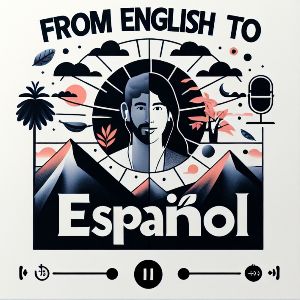Mastering "Haber" in the Present Perfect
April 15, 2025Categories: Spanish Language Learning, Lesson


From English to Español: Bridging the Grammar Gap with Alberto Rodriquez
Welcome to "From English to Español: Bridging the Grammar Gap", the podcast created specifically for English speakers ready to take their Spanish skills to the next level. Each episode dives into the core differences and surprising similarities between English and Spanish grammar, unraveling the complexities of the language in a way that’s clear, practical, and easy to follow. We'll break down essential concepts like verb conjugations, gendered nouns, and the tricky subjunctive mood, offering insights and tips that simplify these new rules and help you avoid common pitfalls. By comparing Spanish structures directly with English, you’ll quickly understand how to adapt what you already know into accurate, natural Spanish. Whether you’re a beginner or looking to brush up on advanced topics, this podcast is your comprehensive guide for bridging the gap between English and Spanish grammar, so you can speak and write with confidence. Join us daily for a new rule or concept, complete with practical examples, exercises, and memorable explanations that make learning Spanish engaging and enjoyable. Perfect for self-learners, students, and anyone serious about mastering Spanish grammar, "From English to Español" is your go-to resource for building fluency from the ground up.
Understanding the Use of "Haber" in the Present Perfect Tense in Spanish
When learning Spanish, a fundamental grammatical structure is the usage of the auxiliary verb "haber" in the present perfect tense. This construction plays a crucial role in forming sentences that describe actions or events that have occurred at some point in the past and are relevant to the present moment. In English, this is equivalent to the usage of "have" or "has" followed by a past participle.
In Spanish, the present perfect tense is composed of "haber" in the present tense followed by a past participle. Let's look at how "haber" is conjugated in the present perfect tense:
- yo he (I have)
- tú has (you have, singular informal)
- él/ella/usted ha (he/she/you have, singular formal)
- nosotros/nosotras hemos (we have)
- vosotros/vosotras habéis (you have, plural informal in Spain)
- ellos/ellas/ustedes han (they/you have, plural formal)
For instance, if we want to say "I have eaten," in Spanish, we would say, "Yo he comido." Here, "he" functions as the auxiliary verb "haber" in the first person singular, and "comido" is the past participle of "comer."
The present perfect tense is utilized to describe past actions whose effects are still perceived. Consider these additional examples:
- Has terminado la tarea? (Have you finished the homework?)
- Ellos han visitado México muchas veces. (They have visited Mexico many times.)
- Hemos trabajado juntos desde 2010. (We have worked together since 2010.)
It's essential to understand the formation of the past participle in Spanish. Generally, for regular verbs:
- Verbs ending in "-ar" take the "-ado" ending. For example: hablar becomes hablado.
- Verbs ending in "-er" or "-ir" take the "-ido" ending. For example: comer becomes comido, and vivir becomes vivido.
However, there are exceptions in the form of irregular past participles. Some common irregular forms include:
- abrir - abierto (opened)
- decir - dicho (said)
- escribir - escrito (written)
- ver - visto (seen)
- poner - puesto (put)
Nonetheless, certain expressions in Spanish require different structures and are exceptions to this rule. Phrases such as "Hace + time period + que + verb in present tense" can be used to express the duration of an action that began in the past and continues into the present, without employing the present perfect.
For example: Hace tres años que estudio español. (I have been studying Spanish for three years.)
Understanding these grammatical rules and their applications is fundamental to mastering conversational Spanish effectively. It becomes easier to communicate past experiences or actions that bear relevance to the present moment.
To enhance your Spanish learning experience, consider utilizing resources such as Science-Based Learning, which employs scientific methodologies to facilitate language acquisition. Learn more at ScienceBasedLearning.com and expand your knowledge of Spanish today. Get Your Copy to dive deeper into Spanish grammar and more.